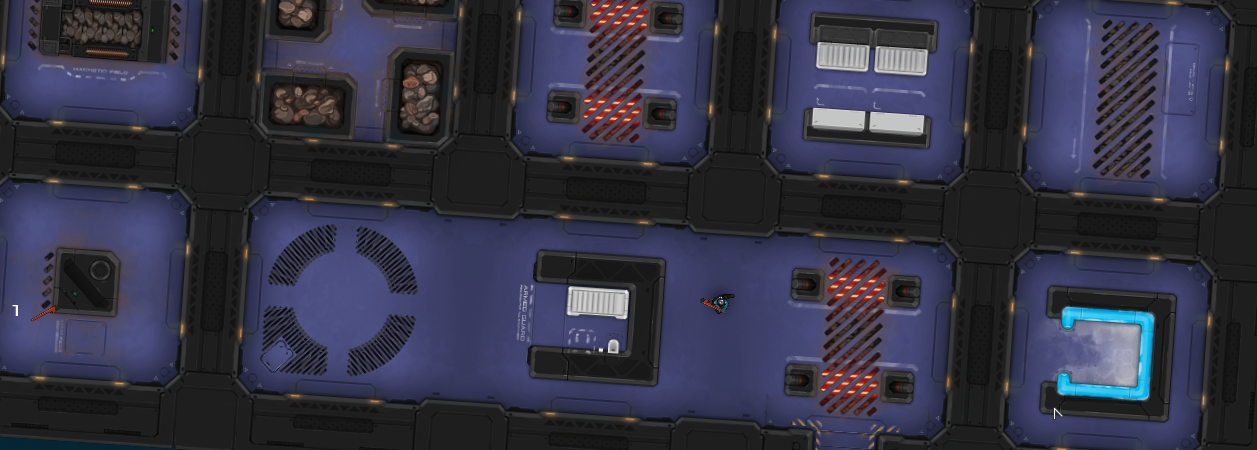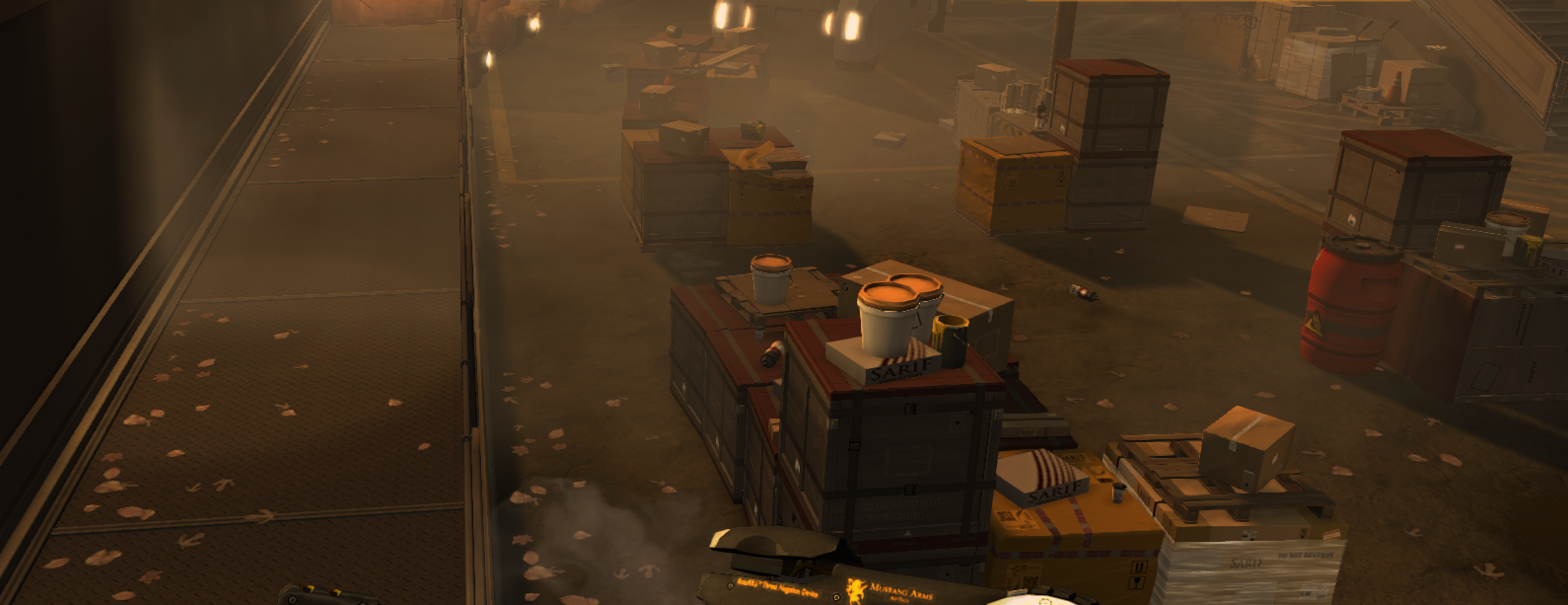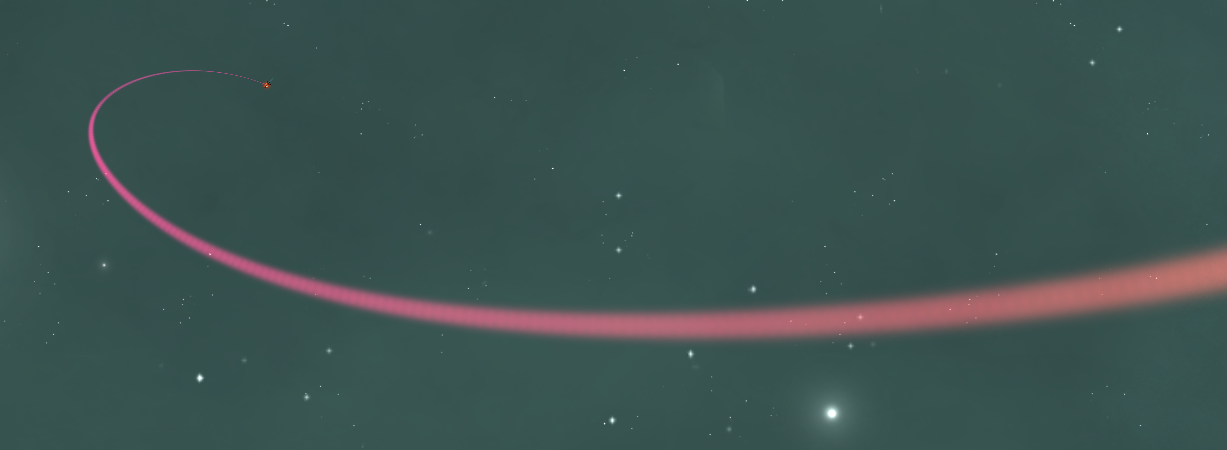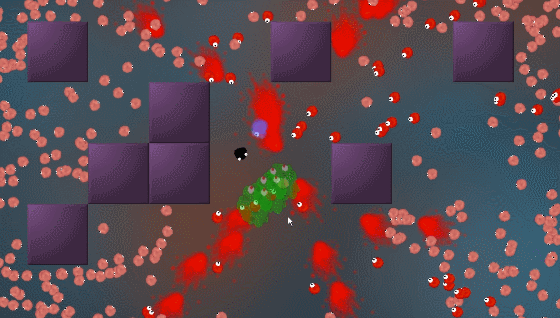TOM FRANCIS
REGRETS THIS ALREADY
Hello! I'm Tom. I'm a game designer, writer, and programmer on Gunpoint, Heat Signature, and Tactical Breach Wizards. Here's some more info on all the games I've worked on, here are the videos I make on YouTube, and here are two short stories I wrote for the Machine of Death collections.
Theme
By me. Uses Adaptive Images by Matt Wilcox.
Search

Generating Locks And Keys In Heat Signature’s Ships
My summary of where we are after the last ship-generation post would be:
- The Drunk Snake is probably the best algorithm so far, for generating the amount of branching and length of critical path we want while looking fairly pleasing.
- But! There’s a lot of room for improvement.
- But! Improvement is getting harder: we don’t have a huge amount of control with these types of algorithms, so we can’t fine-tune things precisely without a big rewrite.
- And! We don’t know enough about our requirements to get really fussy yet – maybe some things that seem bad now will be good when we have certain security devices or guard patrols in.

Laying Out Heat Signature’s Ships: Snakey Vs Branchy
Last time I covered how I taught Heat Signature to build ships out of sectors, join those sectors together, lock some of those doors, then place keycards in the right places to ensure they’re all openable. I’d got the algorithm generating layouts like this, which is great: Continued

Teaching Heat Signature’s Ship Generator To Think In Sectors
I haven’t talked about the way I randomly generate spaceships in Heat Signature since this post – before it even had actual art. That’s partly because I’ve barely touched it since then. I showed the game to developer friends and the press in LA and SF a few weeks ago, and got lots of great input and ideas, but the main thing I came away thinking was: the on-board game needs to be more interesting. And I think better ship interiors are the foundation of that. Continued

What Works And Why: Multiple Routes In Deus Ex
Deus Ex’s appeal is often boiled down to ‘lots of options’, but obviously that doesn’t quite cover it. Right now I’m looking to redesign the ‘sneaking inside spaceships’ part of Heat Signature, so I need more than a vague line about what’s cool about Deus Ex – I need a practical understanding of specifically why it works, and why similar games don’t. So I’m replaying Deus Ex 1 and 3, to figure out what it is I want to steal. And I think it is options, but it’s not just number. They have to fill a certain set of requirements, and this is my attempt to nail down what those are.
I’ve been mostly playing Human Revolution so far, but I’ll also use some examples for DX1 since there’s so much overlap. Continued

Natural Numbers In Game Design
In maths, ‘natural numbers’ are the ones you might use to count observable, whole things: eg. there are six people here. Anything that doesn’t work in place of ‘six’ there, like 3.4 or -2, is not natural. They’re kind of ‘numbers you can see’.
I’d like to use the term in game design to mean specifically that: numbers you can see. Things that are represented so simply and wholly and countably that you don’t need to display an actual numeric figure to tell the player how much they’re seeing. They can just see. Continued

Gunpoint Exclusive Edition Owners Now Have A Two-Week Alpha Of Heat Signature
If you own the Exclusive Edition of Gunpoint on Steam – or the Exclusive Extras as DLC – you now have access to a Windows-only, very rough and time-limited alpha test version of Heat Signature!
If you don’t, though, I don’t recommend buying it just to get in on this! This is very unfinished, very unoptimised, and time-limited: I will close it down in two weeks and then you won’t have it anymore. It exists purely to help me find problems with the game and get people’s thoughts, not necessarily to give them the best experience or one I’d charge for individually. Continued
One Problem With Open Game Development
In general I really like open game development – talking and writing publicly about what I’m working on – but I do have one problem. The time when I want to share what I’ve been making is when, after an exhausting amount of work, I’ve finally created something I’m happy with. But sharing it invites critique: anyone who sees a way it could be better will generally tell you about it. Continued

Vapour Trail Experiments
It’s Sunday, so I’m allowed to work on things that aren’t important. This started as a test for an idea I have of how to create a ‘wake’ that expands behind you, something I ultimately want to use to cut through some layers of cloud as you fly. But I accidentally made a cooler version of the existing contrail, so I tried randomly colouring it, and here we are.
Not sure what to do with it from here. I like everything about it except the end, it has what I call ‘fat tail’ problem: no matter how gently I tell the alpha to fade out, the final, big chunk of vapour always looks like it ends rather suddenly, like your ship just has this big fat tail following it.
I like the idea that breacher ships of different factions would have different contrail colours, though. And I think engine upgrades will probably affect this too.
Here are a million shots: Continued
Spot The Bug
My current task in Heat Signature is to tweak the airlocks so there’s room to put a closed door between you and the rest of the ship when you board. That way, you have as much time as you like to plan out your attack and wait till the guards are where you want them.
I needed the airlocks to clear 4 squares on the ship’s collision grid, to give you room to stand. But I hit a weird bug: some of them, maybe a third, did not clear. I checked the ‘clear grid’ function was executing on each of them, but still some of them ended up blocked. Continued
Eurogamer Play Heat Signature
I let Eurogamer play Heat Signature and sat in the back seat to passive-aggressively criticise! It went great!
This is both a slightly better looking build than the last trailer, and a longer vid – shows the whole disrupt/isolate/capture cycle.
What It’s Like Showing Heat Signature To The Press
I used to be press! Now I’m a developer. So I’m showing them my game, and trying to figure out if what I’m showing is exciting. Here’s what that’s like. I would like it known that I really am saying ‘Alec’ when I refer to Alec but it sounds a bit like Alex because of a mouth thing. A similar mouth thing to when I appear to say ‘intereted’ right after.
Writing vs Programming
Writing is like having a conversation with someone who can’t reply until you’ve finished.
Programming is like having a conversation with a robot who screams at you if you pause in the wrong place, electrocutes you if you change your mind, and explodes if you ever use the future tense.

Let Me Show You How To Make A Game
After 7 months, 25 episodes, and about 16 hours of total running time, my tutorial series is complete! I talk you through making a game, from writing your first line of code, to releasing and selling it. It’s aimed at absolute beginners, it only uses free software, the tutorial itself is free, ad-free, the game we made is free, and it’s in fairly digestible 45-minute episodes.
Hope it’s of use! Here’s the game we made:
New Heat Signature Video: Galaxies, Suction And Wrench-Throwing
As always, follow it on Twitter or sign up to be told when it’s out, or ready for testing, here.
I also made a short montage of all the ways I fucked this video up in previous takes: Continued

What Works And Why: Nonlinear Storytelling In Her Story
What Works And Why is a thing where I dig into the design of a game I like and try to analyse what makes it good, hopefully to learn from it but also because I love this stuff.
Spoiler-free
